My Alopecia Story
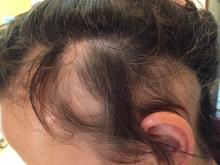
This post is adapted from a chapter in my eGuide, Hair Loss: It’s Reversible without Drugs, Creams, Injections, and Steroids, which you can download here.
Update: You can read testimonials from participants of my Reversing Alopecia Masterclass series here. You can see my most recent personal update (with photo) here.
* * *
I’ve had alopecia, off and on, for 35 years. I got my first half-dollar sized bald spot on top of my head right after I’d gotten a super short pixie haircut. I was in middle school. It was devastating.
[This photo does NOT represent the worst of the worst of my situation. This was taken after I started to see some growth above the ears—it was all previously gone. See slideshow at the end of this post for a few more photos, which still don’t represent the entirety of my misery.]
I was on the swim team and there’s nothing like wet hair to display bald spots in all their glory. (No one else was wearing a swim cap, so I wasn’t going to either.)
I have a blood relative who has alopecia universalis (total hair loss). The dermatologist said, “This is like lightning striking twice in the same place.” I blurted out, “You have to be kidding me.” I was 13.
I proceeded to get the standard “treatment” for alopecia—cortisone shots in my scalp. That didn’t last long—these corticosteroids really messed with my cycles and moods and my instincts told me that it wasn’t a good idea to take synthetic hormones, especially during puberty.
So I stopped. I told my mom, “I’d rather go bald than ever get one of those shots again.” I was fully prepared to lose it all—and be okay with it.
During these three-plus decades, there have been significant swaths of time where I’ve had no spots. That said, there were certainly times when I was experiencing a lot of overall/diffuse loss.
Spots would reappear, seemingly out of nowhere. As I got older and started to learn about health and nutrition in a deeper way, including getting my Hashimoto’s diagnosis and learning about supporting and balancing hormones and the immune system, I couldn’t tie the timing of my spots to anything—I wasn’t experiencing additional stress, digestive distress, increase in Hashimoto’s antibodies, or other symptoms. Or so I thought.
And thankfully, up until my mid-40s, my spots always regrew—quickly. More often than not, a spot would be growing back in before I even knew I had it.
I’ve seen many more spots in the last few years. To say the least.
In fact, two years prior to this writing, one third of my head was bald. (My mathematician husband said it was more like 40%.)
I was on the slippery slope that I thought could happen one day (total baldness), but after 30+ years, it hadn’t—I thought I would just have to deal with a few spots now and then.
I’d previously been fortunate enough to have the kind of hair that made my spots easy to cover. It’s otherwise thick and curly, so I really didn’t give my alopecia a whole lot of thought.
But I was in new territory now.
I had quickly graduated to the ophiasis pattern, which is one of the more difficult alopecia patterns to reverse. It’s where there’s little to no hair above the ears, wrapping around the back of the head.
I had just enough curls on the top and sides to cover it—sort of. Let’s just say that when the wind blew and I wasn’t wearing a hat, I got a lot of stares. I’d just smile and keep walking.
I eventually started thinking about what new hairstyle I’d wear—I was going to go “all out” and adopt a radical new ‘do (a wig).
Granted, those “bad” years were riddled with stress. I lost both of my parents and my brother—all at the same time that I was a first-time mother and working hard on my Essential Thyroid Cookbook. I’m not looking for sympathy—just stating the facts.
Oh yeah, and I went through early menopause at 46. What a shocker. This really bowled me over. But in many ways, it wasn’t that surprising.
Perhaps my alopecia worsening and going through menopause was coincidental? I don’t think so!
Thankfully, I was relatively unscathed from the standpoint of hot flashes, night sweats, moodiness etc. It was pretty uneventful—except for it being a contributing factor to my massive hair loss.
When another shiny circle appeared, I’d look at the nearest spots and think, “Okay, these spots are going to grow together and create another clear-cut on the side of my head.” That’s essentially what happened—creating the ophiasis pattern.
I was hard on myself. What am I doing wrong? What’s the
imbalance that I  don’t know about? How could I have prevented this?
don’t know about? How could I have prevented this?
With Lisa, my Essential Thyroid Cookbook co-author. Perhaps it doesn’t look that bad, but it was. Compare it to the photo below. >>
Oddly, another part of me kind of didn’t care because it could have been a lot worse. I’m wasn’t in pain or experiencing the symptoms of other autoimmunity, like Hashimoto’s, with its lethargy, constipation, brain fog, etc. And I was cruising through menopause pretty easily.
Yet from a professional standpoint, it made me wonder if I was fit to coach others around their autoimmune conditions. Like, if I can’t get a handle on my alopecia,
who am I to help others with their autoimmunity?
But things don’t work that way. You don’t have to be perfect
to help others.
Today, I have a full head of thick hair. I’ve used no  drugs, hormones, or pharmaceuticals.
drugs, hormones, or pharmaceuticals.
This photo was taken on June 1, 2018 (with Andrea Nakayama). For the first time in years, I’m able to grow my hair out again! >
My complete story is too involved to share here and I don’t feel it’s important to outline all of the personal details because if there’s anything I’ve learned in working with alopecia clients the last four years, it’s that everyone’s contributing hair loss factors are unique. Sure, there are more often than not some common denominators, but it’s been my job to uncover my own factors—and to help my clients uncover theirs.
Are things perfect for me? Not quite. Alopecia is one of the most unpredictable and difficult conditions to manage and like I mentioned, the ophiasis pattern is particularly stubborn.
But I no longer need bobby pins and I get to part my hair down the middle once again—something I couldn’t do for a long time. I only have a few small-ish spots—and they’re all filling in. Unlike before, no one knows I have alopecia.
As far as I’m concerned, I now have a full head of hair. And I plan to keep it all.
December 2018 update: My spots are completely filled in. :)
Click on each photo below for a short caption.
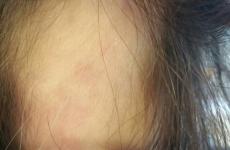
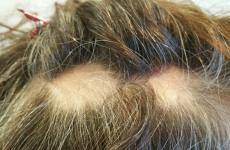
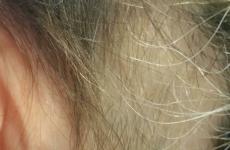
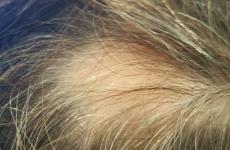
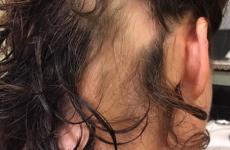
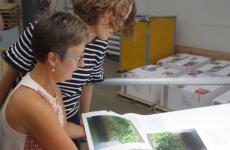
Comments
I have Scarred Alopecia and
I have Scarred Alopecia and skin writing, which has a more technical name that I can’t ever remember. I thought it was stress causing all this, not too sure though. I’ve researched Hoshimoto’s, thyroid, had issues with infertility in my early 40’s and going through peri or menopaus. My sister has Lupus, so I’ve thought about that. Also experiencing stiff joints to the point of pain when I wake up or sit idol and try to walk afterwards hurts my ankles. I use to run and many days I have no energy and desire to do much.
Hi Lupe, cicatricial alopecia
Hi Lupe, cicatricial alopecia and dermatographic urticaria? I’m telling people that I don’t help with cicatricial alopecia, but I actually believe that it’s treatable. The medical community says that there’s nothing you can do about scars, but lasers and certain essential oils have been shown to eliminate scars. If the scars can be removed and the follicles signaled, I don’t know why someone’s hair wouldn’t re-grow. But I don’t have any case studies or specific examples for you, sorry. I’m going on instinct and the disbelief that it can’t be healed.
Oh my gosh! I feel like I
Oh my gosh! I feel like I just read my story, except I was 27 when I found my first bald spot. I've not yet been diagnosed with hashimoto's but I definitely have my suspicions. I am 58 now and a full time wig wearer. I had totally given up on the chance a it being reversed until I read your story.
Hi Dawn, people with alopecia
Hi Dawn, people with alopecia may or may not have Hashimoto’s. You may want to check out the recording of my Preview Tutorial for my upcoming 4-part Reversing Alopecia course. If you enter your name and email above (left), you’ll get the recording, which is only available until tomorrow (Sun., July 1).
Hi Jill, thank you so much
Hi Jill, thank you so much for sharing your story, it fills me with hope!
Unfortunately I missed the class on Reversing Alopecia, I’m so bumped about that.
I was wondering if you have tried/mentioned in the class the use of antihistamines (long term). I’ve personally seen positive effects, and have been advices both by my nutritionist and dermatologist to keep taking it for at least 6 months. I find it hard to believe that there’ll be no side effects. I’m very curious as a I’ve heard repeatedl, that it’s ok to do so.
I’d love to hear your opinion on this.
Thanks For your hard work, it’s extremely inspirin!
Thanks, Daniela.
Thanks, Daniela.
Yes, there is a connection, but I’m totally against long-term anti-histamine use. Most cross the blood/brain barrier and some can exacerbate intestinal permeability, which is the last thing you want when reversing any autoimmune condition or hormonal imbalance.
Very interesting! I will
Very interesting! I will have to explore your information more thoroughly, as my son lost his hair at age 10. He is almost 19 now and has had alopecia universalis all these years, with only one brief re-growth, which was lost when he had a severe case of impetigo. The alopecia has contributed to OCD, anger issues, and bingeing. It breaks a mother's heart.
Hi Rhonda, I just wrapped up
Hi Rhonda, I just wrapped up my first Reversing Alopecia masterclass series. You can read testimonials at this link. I’m doing it again Spring of 2019. If you want to stay abreast of dates, etc., you can use the sign-up for on this page:
https://www.healthfulelements.com/blog/2018/08/reversing-alopecia-course...
Do you work with people who
Do you work with people who have hair loss but not alopecia? I think my precipitous and only 3 months-long hair fall is from the use of the steroid nasal spray from my first-ever intense spring allergies. I may have been overdoing the fermented foods intake, like kombuchas, as well.
Hi Amy, I don’t know how I
Hi Amy, I don’t know how I missed this comment back in July. Yes, I work with people with all kinds of hair loss patterns, except for male pattern baldness (I actually know quite a bit about it, but I’m not comfortable working with men who are experiencing this pattern) and scarring/cicatricial alopecia.
Hi Jill,
Hi Jill,
I happened upon your page tonight during my routine "ophiasis" Google search. My 10 year old son as ophiasis. He had a small spot (nickel size) appear around age 4 and it went away... The pediatrician didn't seem that concerned at the time... it happens, kids will have a spot from time to time. And then when he was 6.5 years old, I noticed in the sunlight the bottom of his hair at his neckline thinning out. I wasn't overly concerned at that time either. And then eventually he lost almost all of it. we have been through several cycles of loss and regrowth and at this point it doesn't ever seem to grow back in the ophiasis area of his scalp. It's funny b/c his hair is so thick you can't tell at all right now... unless the wind blows or he swims. We live in San Diego and he's a very athletic 10 year old. Surfing, skateboarding, swimming, baseball, etc. etc. Most days he isn't bothered; too many other things to focus on, but the days he is bothered and emotional about it, it's almost too much for my heart to take, but of course I stay strong on the outside for his sake. Apologies for the long winded comment, I was just happy to run across your very candid post about your alopecia / ophias struggle. Even though I myself don't have alopecia, I can relate. I can tell you I would take gladly trade spots with my son if I could.... I'm interested in your healing from within philosophies from a nutritional standpoint, etc. and would love to get in touch. If you'd like to email me please do so. Thank you for your time Jill!
“Kids will have a spot from
“Kids will have a spot from time to time?” What a strange thing for this doctor to say.
Yes, I’ve worked with several parents on behalf of their kids and it can be so heartbreaking. But believe me, there’s hope. You can go to this page to schedule a Jumpstart session with me, where we’ll go as deeply as we can in the time allowed. I’d love to connect with you. https://www.healthfulelements.com/contact
I noticed that you cured
I noticed that you cured yourself of Alopecia. Would that also work for male pattern baldness? Or is that something completely different?
While some of the things I
While some of the things I teach my clients and course participants may work, I don’t specialize in male pattern baldness.
Hi Jill,
Hi Jill,
My 13 y.o. Daughter, with long, thick, beautiful hair has experienced sudden hair loss. I've been trying to get her in to a specialist (wait times are long!), but a friend of mine is a dermatologist and feels strongly this is autoimmune- alopecia areata. I want to treat the area ASAP, but after reading your alopecia journey, also beginning at 13, I want to approach this with as much knowledge as possible and have a holistic approach.
Do you ever offer a consultation with people or offer guidance on how best to address the underlying issues? I think stress and hormones are definitely a major factor. We are located in NJ and would love to find local resources to help treat the condition.
One thing to note is my daughter is also a competitive Irish Step dancer and has to wear very tight, uncomfortable wigs when competing. It's our least favorite part of dance, but she is very dedicated. competing at the world level and it's a necessary part of their costume. I initially thought it could be traction alopecia, which is fairly common in Irish Dance, but my gut instinct is there more to the story.
thank you!
Rebecca
Hi Rebecca, this is Ruby,
Hi Rebecca, this is Ruby, Jill's assistant. I'm going to email you. :)
Thank you so much!! Looking
Thank you so much!! Looking forward to hearing from you.
Hi there
Hi there
my 12 year old son may have Alopecia areata - I'm so scared sad and heartbroken - I want to try a more holistic approach as I'm scared when reading other parents stories on steroids and side effects -,my son is in athletes & plays competitive basketball - I'm so sad how this is going to effect him and will he want to stop playing and going to school
His first spot started last October - at that time the pediatric dermatologist thought it was hair pulling - which it was not - it grew back within 6 months and no treatment - now again this October again I noticed a spot by his left lower neckline and now it's on the right side - by his neckline -'he has 2 spots also on the right and left side under his thick hair
I'm curious is this seasonal ? How could it start last October and now this October ? What can we do natural for him ? What can he use safely to cover up his bald patches when he goes back to school ? What products are safe ? I'm so sad for him - the pediatric derm feels like she's 80 percent sure it's alopecia areata bit she said she sees no explanation point hairs and sees regrowth everywhere
how can I help him? Naturally
what blood tests should be ran ?
What specialists should he see ?
What safe products to cover up the bald patches can we use ?
thank you for your help
my heart is breaking for him
Add comment